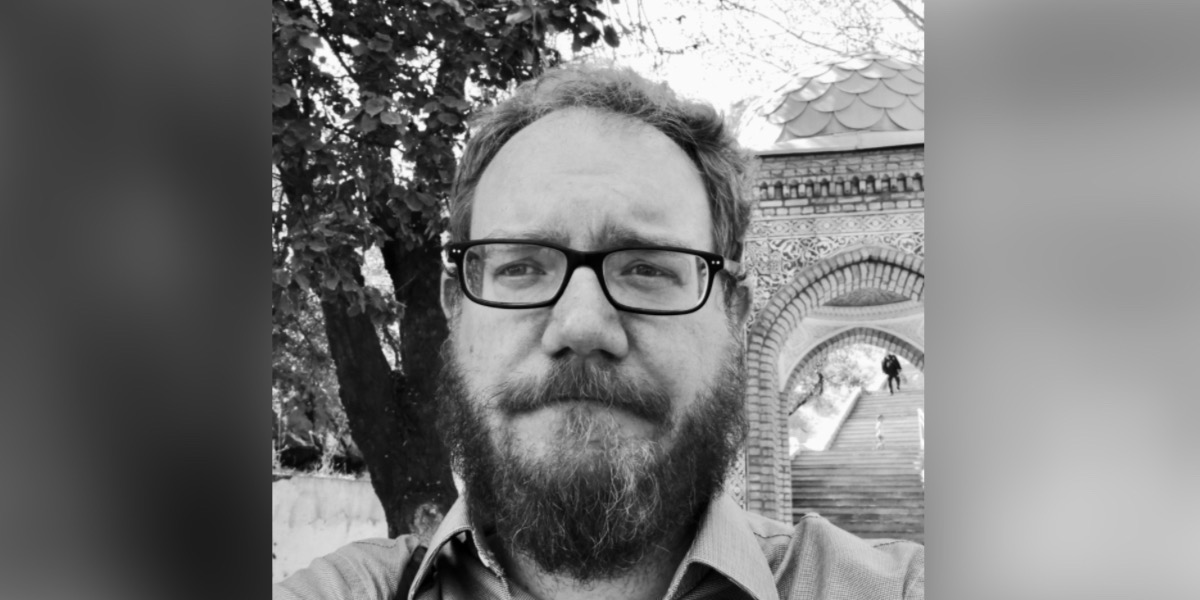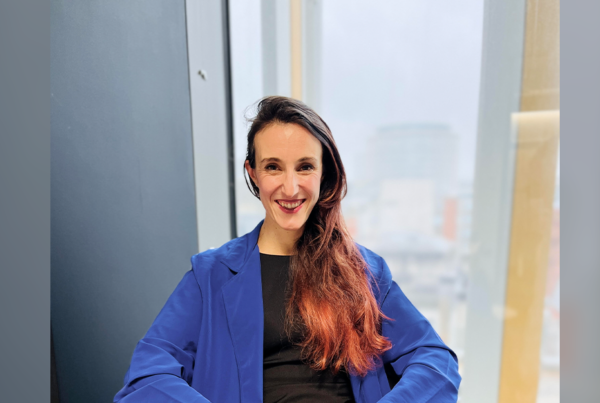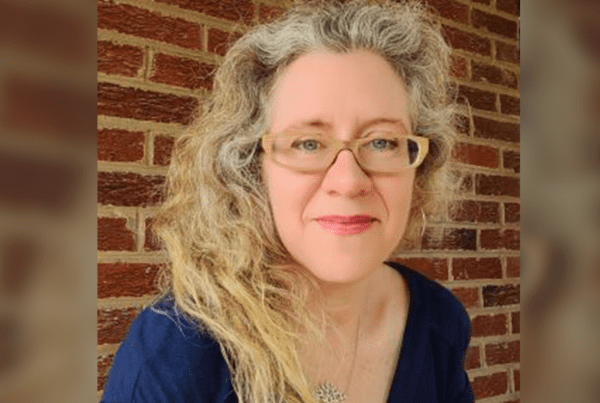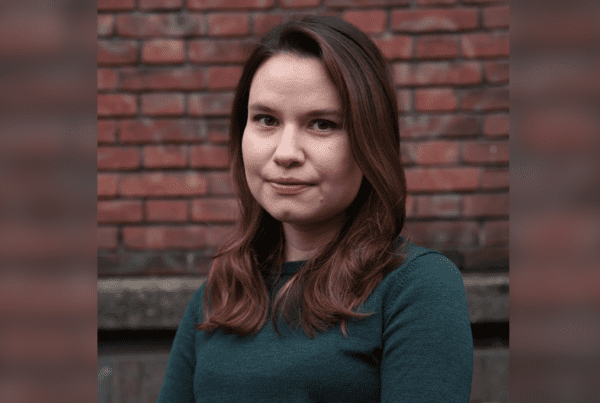You have been following jihadism for several years, trying to disentangle the personal trajectory of jihadists and our ideological (mis)reading of the reasons for their engagement. Could you tell us more about how you interpret the factors that push individuals to join jihadism?
I think the way I have come to approach trying to understand these factors mirror, and is informed by, the same progression that has happened in the whole field. The 9/11 attacks were such a pivotal moment in both sort of forming the field as it is now, and the academic generation that I belong to in terms of funding, opportunities and emphasis. Much of the work that came in response to that attack was at its root, driven by trying to understand the motivations of individuals for joining a group like al Qaeda and their allies, which included the Islamic Movement of Uzbekistan and later the Islamic Jihad Union in Central Asia. I’m speaking as an American, of course, but I think as other places experienced similar traumatic AQ-affiliate attacks in the years that followed. Whether London or Madrid, or smaller scale attacks like the Tashkent bombings in 2003 and 2004, they sparked the same kind of reactions.
I think the first impulse was to try to understand that at the individual level. There was so much time, energy and funding put into the question of “who becomes a terrorist?”—with the understanding that it was about individuals and ideology. If ideology really is the fundamental driving factor, and that ideology only seems to appeal to or capture certain people, the question is, “who are those people?” The tactic of suicide attacks also led us to assume at first, that there was something deeply individual about the problem and also something fundamentally different about contemporary jihadism. Although the research has evolved, I’ve been in so many briefings with government officials, even in recent years, in which the only real takeaway they want is some kind of “profile of a terrorist,” so that we know which buttons to push and which levers to pull to influence individual behavior.
Earlier in my own research, I tried to begin with that individual-level focus on the recruiting process. I watched it happen online, I read and watched all kinds of ideological material, I spent time in the groups where recruiting was happening and for some projects, I even experienced recruiters trying to attract me. One of the things I found in this process was that the ideology that, we assumed, was this key causal factor seemed almost incidental to the process of recruitment. This is one of the reasons why I’ve come to feel uncomfortable with the “pathways to radicalization” model in general, because it assumes that people become radicalized as individuals and therefore join a radical group dictated by their ideology. My experience from looking at individual cases is that just as—or more—often, it works the other way around: they join the group first for other reasons and only within the group may become “radicalized.” Often, they are introduced to that new extremist group by one of their existing groups—their personal network of friends, family members, or classmates, rather than even having an interaction with a recruiter.
I’ve come to feel uncomfortable with the “pathways to radicalization” model in general, because it assumes that people become radicalized as individuals and therefore join a radical group dictated by their ideology. My experience from looking at individual cases is that just as—or more—often, it works the other way around: they join the group first for other reasons and only within the group may become “radicalized.”
In recent years as I’ve had the opportunity to interview more people who demobilized from jihadist groups, I’ve asked them about why they chose to join the specific group that they did. I have been somewhat surprised at how little importance they often assign to ideology in that decision. More often, this process seems to have more to do with a larger conflict they find themselves within, and the mechanisms joining that group might offer them to resolve that conflict. Often, for Central Asians, it has to do with being displaced or cut off from the pathways they expected to have for making a better life for themselves and their children, in whatever way they perceive that goal. On an individual level, that looks so different in each case that it’s very hard to make generalizations about it; this goes with one of the overall findings in the whole field in recent years, that this individual level “profile” of someone who ends up in a jihadist organization just doesn’t exist. For every ten people mobilized, you often have ten very different stories.
Broadly then, I would say that in my own work and in the field overall, we have come to find it may be more useful to begin with a different question: not who gets mobilized to a jihadist organization that might then mold them into being a terrorist or suicide bomber, but what kind of conflict might have been happening that motivates clusters of people to go to Syria? This conflict-based model that looks at community-level factors helps us to understand why violent extremism often overlaps with other types of (non-ideological) violence. It also suggests that even if we arrest all the ideologues, ban all the literature or block all the accounts, we are unlikely to achieve the ultimate goal of preventing violence. Unless the underlying conflict is resolved, the groups and their ideologies may simply mutate, and in some cases become only more ruthless and extreme. The Afghan conflict that has now spanned three generations is unfortunately a good example of this.
We have come to find it may be more useful to begin with a different question: not who gets mobilized to a jihadist organization that might then mold them into being a terrorist or suicide bomber, but what kind of conflict might have been happening that motivates clusters of people?
Do you consider the term ‘illiberalism’ relevant in defining jihadism? How is liberalism presented as the enemy of Islam in jihadist perceptions? Which aspects of liberalism—political, economic, cultural—are the most criticized?
In jihadist and political Islamist circles in Central Asia, “democracy” is used to signify everything negative that came after the collapse of the Soviet political and social order.
I do, although unlike in some Western contexts, the word liberalism is not usually the one defined in the negative, since the putative “transition” from the Soviet political order to a liberal democratic order was generally collapsed into a single word: “democracy.” In jihadist and political Islamist circles in Central Asia, “democracy” is used to signify everything negative that came after the collapse of the Soviet political and social order.
From authoritarian leaders “elected” in farcical contests without competition, corrupt judges and police, young women trafficked into prostitution, money lost in the little casinos that cropped up like mushrooms all over cities in Kazakhstan and Kyrgyzstan in the 1990s, organized crime that took over markets and demanded insurance payments from shopkeepers, to the alcoholism and drug addiction that ruined lives and families during that same transition period, and still does. Everything that came with the profound sense of disorder and unpredictability in the chaos of the 1990s to the very predictable oppression you could expect in April this year if you were a Tajik journalist challenging the government’s claims that COVID-19 wouldn’t affect the country or wasn’t already killing people. All of this is lumped together in jihadist narratives as the fruit of liberalism and democracy.
In Central Asia, what is the most criticized are not really parts of liberalism, but the caricature that liberalism has become in much of the former Soviet space. More than any specific cultural or political aspect, it’s this association with chaos, disorder and oppression: being left vulnerable to the naked political and economic power of oligarchs and elites. At least, [that’s] the rhetoric used. The economic aspect most criticized is corruption and the really significant inequality that is perceived (correctly, in some cases) to have resulted from that. Corruption is certainly not a liberal economic value, but because corruption is so central to the lived experience in the era self-defined by these states as democracy, it becomes one of the narratives that gains the most traction.
Neither these overlapping crises nor the current very non-democratic political order in most Central Asian states has much objectively to do with liberalism or democracy, but for very different reasons both jihadist groups (in condemning it) and political elites (in justifying it) consistently define the current system as essentially representing “democracy.” Each of them benefits from presenting the public with a false dilemma: there are only two stark choices: us or them. Authoritarian regimes like the late Islam Karimov’s in Uzbekistan, or Tajikistan under Emomali Rahmon in 2020, constantly claim that those abusive and corrupt police states are as “liberal” as they could possibly be while still holding back the line against wild-eyed jihadists. Essentially, Jihadist groups agree. They claim that what you had under Karimov are the consequences of liberalism, the only real source of justice and security would be theocracy that rejected the flimsy liberal principles designed by mere men.
To make it more confusing, in their more acrobatic rhetorical moments both the authoritarian regimes and jihadist groups denigrate one another with accusations of being the “poison fruits of liberalism,” since in their internal messaging, local governments, Islamist and even some jihadist groups engage with the very popular conspiracy theory that terrorism is itself part of liberalism in the most direct sense—that Western governments created, fund, and control ISIS and orchestrate terrorist attacks themselves in order to provide a pretense for military invasions or orchestrating coups. This is the ground where very different forms of illiberalism and anti-liberalism meet.
To make it more confusing, in their more acrobatic rhetorical moments both the authoritarian regimes and jihadist groups denigrate one another with accusations of being the “poison fruits of liberalism”.
As much as it can seem like a farce, the tragedy in all of this to me is that in both of these very different visions of re-ordering society after the chaos and trauma of the 1990s, actual democracy and what we define as universal values and human rights are rejected by both sides. In both of these versions actual democracy in which people have political agency over their lives or can make their own decisions is not a choice, and ordinary people are left without a non-revolutionary mechanism for political change.
The longer I work on conflict, the more I feel that the genius of democracy, with or without its much better track record for helping us achieve broader access to those basic human rights, is that it provides a mechanism to resolve political disputes without violence. This comes back to the first question about factors that drive people into jihadist movements. If real democracy is left off the table and instead the one-party state that becomes an engine for astronomical inequality is what you grow up believing is “democracy,” why bother to struggle or take risks for it? I think liberalism is facing a real crisis in the former USSR, and jihadism fits into that.
Of course, jihadism is only one of the (smallest) movements, construing itself as a response to disappointment with this version of pageant democracy. I will leave aside far-right, nationalist or neo-traditionalist movements since I am sure they will be explored by authors who know them far better than I do. But I can’t imagine having this conversation without at least lightly touching on the broader trend of religiously inflected “re-traditionalization” that is in many ways a response to those same experiences. Farideh Heyat’s 2004 article “Re-Islamisation in Kyrgyzstan: gender, new poverty and the moral dimension” captured this movement as it was coalescing and still a very direct response to the experiences of the 1990s in a way I really admire.
Here the distinction between democracy and liberalism becomes relevant again, because within this trend we find groups and figures who will participate in democratic institutions such as they are—who might run for parliament in Kyrgyzstan, for example—but who might define themselves in a way that is distinctly (and proudly) illiberal, particularly on women’s rights and LGBT+ rights. Strong civic and legal institutions can survive this kind of internal contradiction (we hope) and still preserve equality under the law while offering a mechanism to debate and resolve those differences. Without those strong institutions, including political parties that can actually govern or develop plans and platforms that are appealing to an electorate, it becomes very tempting for aspiring political elites to appeal to dark populist instincts that pin the blame for inequality and suffering on “liberalism.” While Islamist and jihadist groups are the perennial favorites for this scenario in no small part because of the rhetoric from incumbent regimes mentioned above, a (ethno)nationalist candidate who can co-opt some of the identarian, quasi-Islamic anti-illiberalism is in my view a far greater and more realistic threat.
You know well the evangelical circles in the U.S. Do you see links between jihadism and the US Christian Right in terms of their vision of the world? More broadly, do you make parallels between the rise of national populism in Europe and the phenomena you are studying in the Islamic word? Are there similar forms of disempowerment for some individuals? Do you see challenges to traditional masculinity as a key driver for illiberalism in both the Western national populism sense and jihadism?
The short answer is “yes”. To all of the above. Which is why this project is such a fantastic idea and so well timed. I think more broadly, to the point about national populism in Europe and the “re-traditionalization” that I mentioned above, we see a wide spectrum within both of these contexts that mirror one another at many different points, not just at the violent ends. Everyone can probably guess the Central Asian country I had most in mind when writing that final paragraph in the last answer—Kyrgyzstant—but substitute identarian for Catholicism and we could easily be describing Poland. A sense of disempowerment, and that inability to see a path to achieve the basic goals s person or group has in life, I think, is something that is common in both contexts. I certainly see challenges to traditional masculinity across both contexts too. This is something that deserves a great deal more attention, as well as the blatantly misogynistic character of movements from the far-ends of both of these broad camps, and the centrality that defining itself in opposition to feminism has, in both contexts.
At the same time, it’s important to remember that the picture is complex: women in these movements can also have agency, and they also sometimes join jihadist groups as an act of asserting that agency. In research over the past couple of years I can think of several cases from Uzbekistan and Kyrgyzstan; women joined groups in Syria on their own because they believed those groups would offer them more respect or equality than they were receiving in their own community, or from their husbands at home. That said, in the Central Asian context what we’re seeing is not so much a rejection or reaction to liberalism as it actually exists in social mores and norms in France or Scotland or the US, but maybe more a sense that the promise of liberalism and its benefits has not led to anything that looks like everyday life in those places, and what an illiberal movement promises is an improvement over the status quo, to turn back the clock with a sort of magical time machine to what I’m told engineers call the “last known good configuration.”
Both of these broad movements idealize a mythical “golden age” and promise they can return to it. I think in both of these contexts, people are attracted to deeply illiberal movements at times under the false promise that political equality for other members of society—women, immigrants, minorities—was part of the historical change (or the key historical change) that brought about the inequalities or disempowerment they face now. Having never had the opportunity in most cases to experience actual liberalism as a political or social order might put Central Asians at a disadvantage in evaluating these narratives, but obviously, we see strong rejections of liberalism and even basic democratic values in mature democracies too, so I think that indicates that there are deeper conflicts here that we need to explore, that again, make this project very timely.
People are attracted to deeply illiberal movements at times under the false promise that political equality for other members of society—women, immigrants, minorities—was part of the historical change (or the key historical change) that brought about the inequalities or disempowerment they face now.
How would you compare and discuss jihadism and far-right terrorism?
I think that using illiberalism as a frame to explore those parallels may be a more useful approach than referring to them as religious movements—since neither White Power groups that claim Christian identity nor tiny jihadist groups that claim to represent the world’s Muslims can be well understood as having evolved within their religious contexts, they are deeply political.
There are some striking parallels, especially in the Christian Identity movement that developed in the U.S. after the Vietnam War. Kathleen Belew’s fantastic book Bring the War Home,explores that broader movement so well within a historical context. More recent iterations, militias like the Hutarees in Michigan for example, so closely mirror jihadist propaganda that you could almost just swap the identifying terms and you wouldn’t know whose texts you were reading. I think that using illiberalism as a frame to explore those parallels may be a more useful approach than referring to them as religious movements—since neither White Power groups that claim Christian identity nor tiny jihadist groups that claim to represent the world’s Muslims can be well understood as having evolved within their religious contexts, they are deeply political.
I had not worked as much on European national populism or far-right groups until I spent a summer on a project on political violence in Tbilisi in 2016, just after finishing the series published by the GW’s Central Asia Program on ISIS recruiting in Central Asia and had worked on jihadist mobilization in from Caucasus as well. I was really struck by the parallels, especially in the messaging and recruiting techniques used online and in social media, by neo-Nazi and ultranationalist groups in the Caucasus and jihadist groups from other parts of the same region.
Obviously far-right and jihadist movements have many important differences, that goes without saying, and so it’s less analytically interesting. It’s important to be clear about those differences. In classifying both as violent extremism, we often presume that policy measures or programs that prevent one would also prevent the other. That’s a question that I’m very interested in, and I’m not sure how much it’s been empirically tested. From a social psychology or even sociological perspective I think there’s pretty wide consensus it’s more or less settled as true that mechanisms for mobilization to extremist violence are broadly common across both types.
Political violence is something we can discuss as a broad phenomenon, and I have found that adopting that comparative perspective very helpful especially in the context of Central Asia where religion itself is often treated as the primary causal factor behind jihadism; while no one or virtually no one would or should argue that protestant Christianity is the primary root of the White Power militia movement.
This is where I think adopting a conflict focused perspective might help us see some important differences, although, the local context that informs that conflict is important too. An 18-year-old in rural Michigan who is thinking about joining a group like the Hutarees and an 18-year-old in Zhezkazgan, Kazakhstan, watching ISIS videos might be responding to some of the same global situations and even watch the same movies or the same Mixed Martials Arts fighters. They might even describe their goals or their beliefs in nearly identical ways, but the context they are experiencing and responding to still has local specifics that are vastly different. I suspect that those specifics, especially the political context they take place in, is probably still very important to defusing both of those situations and interrupting the cycle of violence.
Noah Tucker is a program associate at George Washington University’s Elliot School of International Affairs Central Asia Program and Senior Fellow at the Atlantic Council Eurasia Center. He was previously Executive Editor for the Not in Our Name film and television series, the first region-wide project designed to prevent violent extremism in Central Asia through community dialogues in areas most directly affected by recruiting to Syria. Noah has worked as a consultant on multiple collaborative projects for government, academic and international organizations to identify the way social and religious groups affect political and security outcomes in Central Asia and Afghanistan. Recent publications include “Terrorism without a God: Reconsidering Radicalization and Counter-Radicalization Models in Central Asia” (GWU Central Asia Program September 2019). Noah has worked on Central Asian issues since 2002—specializing in religion, national identity, ethnic conflict and social media—and received an MA from Harvard in Russian, East European and Central Asian Studies in 2008. He has spent some six years living and working in in the region, primarily in Uzbekistan and Kyrgyzstan and works in Russian and Uzbek. He most recently conducted fieldwork on reintegration efforts for returnees from the Syrian conflict in Uzbekistan in March-May 2020.








One Comment